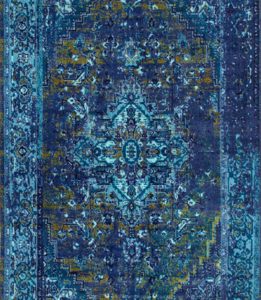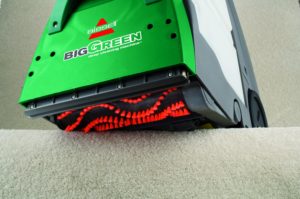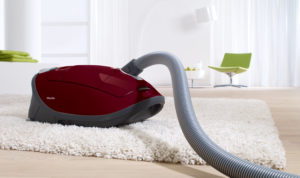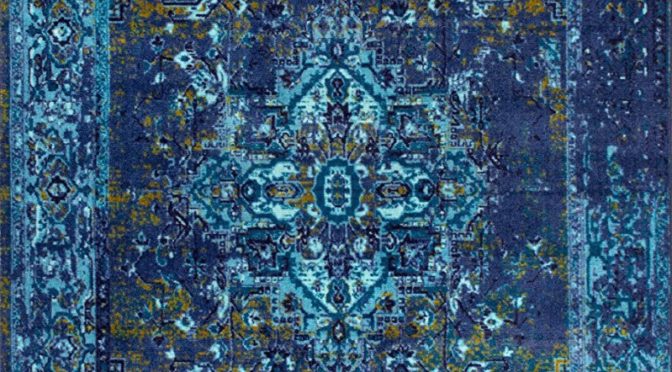
If you ask anyone in the carpet industry to name the most popular type of fiber for home use, you’re going to hear nylon over and over again. When you consider its reputation for durability, ease of maintenance, and popularity, it’s not hard to understand why nylon is “in.”
We recently provided a bird’s eye view to popular synthetic fibers, and nylon was one of the fibers we profiled and promised to review in greater depth later. Today we’re going to take a closer look at nylon-based carpets and rugs.
What’s the history of nylon carpeting and why is it so popular?
Wallace Hume Carothers, who directed research at DuPont, invented nylon almost 100 years ago in 1935. Back then, people began using it for women’s stockings followed by fishing line. However, it wasn’t until the mid-1950s that nylon started being used for carpeting. It took the carpeting industry by storm as the first completely synthetic fiber, and it’s retained its lead among synthetic fibers ever since.
Despite the growth of various competing synthetic fibers, nylon remains exceptionally popular today because it’s durable and resilient. The durability of the fiber allows it to hold together instead of shred when stressed by shoes, children, and pets. The resiliency paired with texture retention keeps it looking like a carpet and not like something begging to be thrown out on trash day.
Who makes nylon carpeting today and how much does it cost?
Today nylon carpeting is made by a range of manufacturers besides DuPont. Typically it’s either made in-house or bought from outside companies and turned into carpeting. Nylon made directly by carpet manufacturers will be cheaper than those outsourced due to cutting out the middlemen. The fact that it’ll be cheaper doesn’t mean that it’s lower in quality; don’t be fooled by any manufacturers that claim their nylon is better because it’s imported.
You can buy nylon at a range of price points, from entry level carpets that will still be more durable than olefin and polyester, to higher-end carpets that will come with better warranties.
Is there a difference between Nylon 6 and Nylon 6,6?
In the carpet industry, two kinds of nylon are commonly found: type 6 and 6,6. Chemistry nerds will recognize the comma from IUPAC nomenclature, and it refers to the arrangement of carbon atoms. Both polymers are nylon but have slightly different molecular structures. While there’s endless debate about the superiority of one polymer to the other, the truth is that both are nearly identical except for a few key differences. Both nylon strains have equal durability and resiliency.
While the melting points are different (they’re higher in nylon 6,6 due to more chemical bonds), this has no meaningful impact on carpet longevity, as if you’re in an environment where nylon is melting or close to doing so, you’ll have died long ago from the toxic gases either releases at such temperatures. It is worthy to note that nylon 6 is easier to recycle back to carpet due to being simpler in molecular form than nylon 6,6.
What makes nylon resilient and stain resistant?

Nylon is resilient primarily because of the hydrogen atoms bound to it. Hot water extraction cleaning, or steam cleaning, stimulates hydrogen (keeping in mind that water is simply 2 parts hydrogen to one part oxygen), resulting in a renewal of carpet strength at the fiber level. What this means is that you’ll want to steam clean your nylon carpets every 12-18 months to keep it in good condition for as long as possible. If you use nylon carpeting or rugs in high traffic areas, you’ll want to steam clean it more often. We’d recommend the Bissell 86T3 Big Green if you’re serious about keeping your carpets and rugs for a lifetime.
The stain resistance in nylon carpeting comes primarily from stain treatments; nylon by itself is hydrophilic and will absorb whatever moisture it can get (e.g., coffee or wine or orange juice…), which means it will pick up spills and quickly turn them into stains without stain treatments. Among such treatments, solution-dyed nylon is best. Here the color of your carpet or rug is fixed by adding it when the fiber is produced instead of through dyes once the fiber has already been made. Because the color is tied to the fiber at a molecular level, it’s resistant to fading and more or less permanent, which means spills are far less likely to connect themselves to the fibers to stain them.
Which carpet cleaners and vacuums best maintain nylon rugs and carpets?

As noted above, when it comes to carpet cleaners, we’d suggest the Big Green every time. For vacuuming nylon rugs and carpets, our standard recommendation is the Miele Complete C3 Soft Carpet. It’s not cheap, but it’ll do a better job on your carpets (nylon or otherwise) than pretty much any other vacuum out there. The key point to remember with nylon is that you want to steam clean it periodically and vacuum it immediately after cleaning out stains to reduce the risks of absorption.
![]() You can buy the Bissell 85T3 Big Green carpet cleaner here on Amazon. You can buy the Miele Complete C3 Soft Carpet here.
You can buy the Bissell 85T3 Big Green carpet cleaner here on Amazon. You can buy the Miele Complete C3 Soft Carpet here.
![]() Canadians can buy the Miele Soft Carpet here and the Bissell Big Green here.
Canadians can buy the Miele Soft Carpet here and the Bissell Big Green here.
 If you find our research on PMC helpful, you can follow our efforts to keep maniacally reviewing home cleaning tools by shopping through our links above. We promise to keep fighting the good fight against every horror children, animals, and grown, yet messy humans can inflict upon a clean home.
If you find our research on PMC helpful, you can follow our efforts to keep maniacally reviewing home cleaning tools by shopping through our links above. We promise to keep fighting the good fight against every horror children, animals, and grown, yet messy humans can inflict upon a clean home.

